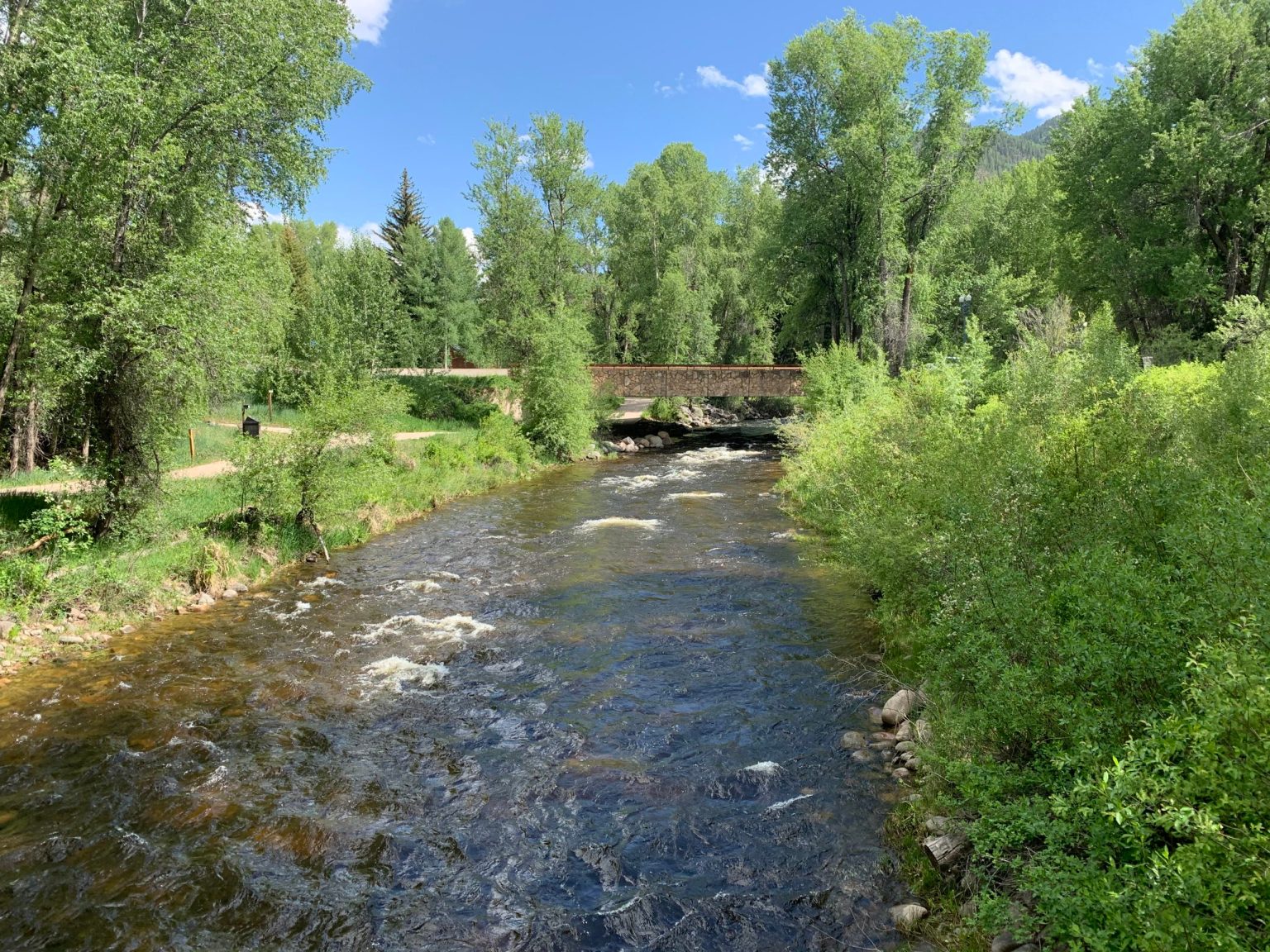
Pitkin County on Wednesday inched a bit closer to having an additional 100 acre-feet of water flow down the Roaring Fork River with the approval of an intergovernmental agreement and memorandum of understanding.
Pitkin County commissioners unanimously approved on first reading the IGA with the city of Aurora and the MOU between the county, Aurora and the Bureau of Reclamation. The agreements are the final step in a yearslong effort by the county to get more water into the often water-short upper Roaring Fork by means of a complicated exchange.
As part of a 2018 settlement of a water court case, Aurora is allowed, in exchange for leaving more water in the Roaring Fork, to continue diverting water out of the headwaters of the Fryingpan River basin to the Front Range through the Busk-Ivanhoe system.
This can be done because Aurora owns about 5% of the diversions of the Twin Lakes Reservoir and Canal Company, the entity that owns and operates the Independence Pass Transmountain Diversion System.
The IGA and MOU bring the total amount of water to be left by Aurora in the Roaring Fork to 1,000 acre-feet. That amount is about half of the water that Aurora owns in the Twin Lakes company.
Pitkin County’s goal was to get more water into the habitually stressed reach of the Roaring Fork that flows through Aspen during the summer and fall. Aurora has released water into the Roaring Fork for the past two summers under this settlement agreement.
“It was definitely noticeable by users of the river, and they were excited,” said Commissioner Patti Clapper. “It worked exactly like we wanted it to work, and the fact that we were able to draw this water when we needed it most was really a key point in this whole deal.”
But the extra water in the Roaring Fork could be diverted and used by any downstream senior water-rights holder. The new agreements would allow Aurora — which still maintains ownership of the water, even though it’s being released to the benefit of Pitkin County — to “call” the water down to the confluence of the Roaring Fork with the Fryingpan in Basalt. This water could then be used to satisfy downstream water users, who usually meet demands by releasing water they store in Ruedi Reservoir.
Leaving this water, up to 900 acre-feet, stored in Ruedi would allow Aurora to take half that amount (up to 450 acre-feet) from Ivanhoe Reservoir and send it to the Front Range for municipal use. Pitkin County would be entitled to about a quarter of the water (up to 100 acre-feet), which Aurora would release back into the Roaring Fork, bringing the complicated exchange full circle.

Benefits to using Fork water
There are secondary benefits to using Aurora’s water released into the Roaring Fork to satisfy downstream needs and leaving stored water in Ruedi, said Pitkin County Attorney John Ely. Fewer releases from Ruedi means reservoir levels can stabilize, and it would be better for anglers in the Fryingpan’s gold-medal trout fishery.
“You won’t see as many surges of water being released from Ruedi down the lower Fryingpan, making it more difficult for fishermen to access the river,” Ely said. “Those three benefits alone are pretty good scores for us.”
Ely said with the additional 100 acre-feet on top of the earlier agreement already in effect, there could be an extra 20 to 30 cubic feet per second of water flowing down the Roaring Fork, making it possible to run the Slaughterhouse rapid later in the season, among other benefits.
“I think if we are going to get 20 cfs on top of that, that saves the life of the upper Roaring Fork,” said Commissioner Greg Poschman. “I am really, really grateful and excited to see this happen.”
The IGA will have a second reading and final approval by commissioners on April 28. The agreement will allow the governments to move ahead with a storage contract and water-court filing to execute the exchange.
Aspen Journalism covers water and rivers in collaboration with The Aspen Times. This story ran in the April 15 edition of The Aspen Times.
The Water Desk’s mission is to increase the volume, depth and power of journalism connected to Western water issues. We’re an initiative of the Center for Environmental Journalism at the University of Colorado Boulder. The Water Desk launched in April 2019 with support from the Walton Family Foundation. We maintain a strict editorial firewall between our funders and our journalism.





